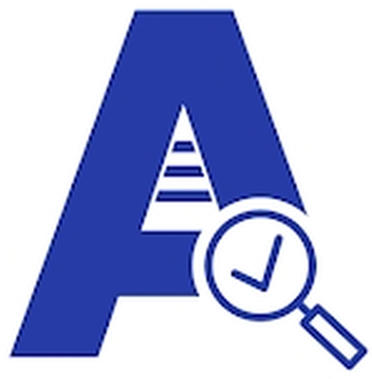Contractor Management Checklist
Adapting Contractor Management Checklist to fit the specific requirements and complexities of your projects will help ensure smooth contractor management and successful project outcomes.
Managing contractors effectively is crucial for ensuring the success and safety of projects.
Here’s Contractor Management Checklist to help you manage contractors efficiently:

Prequalification:
- Verify contractor licenses, certifications, and insurance coverage.
- Check references and past performance.
- Assess the contractor’s financial stability.
Contract Development:
- Clearly define project scope, objectives, and deliverables.
- Specify timelines, milestones, and deadlines.
- Outline payment terms and conditions.
- Detail safety and regulatory requirements.
- Include clauses for dispute resolution and termination procedures.
Onboarding Process:
- Conduct orientation sessions to familiarize contractors with project goals, safety protocols, and site-specific requirements.
- Provide access to necessary resources, such as project plans, safety manuals, and equipment.
- Collect necessary documentation, such as signed contracts, insurance certificates, and permits.
Communication:
- Establish channels for regular communication between project stakeholders and contractors.
- Hold regular progress meetings to discuss project status, challenges, and resolutions.
- Ensure all parties are informed of any changes to project scope, schedules, or requirements.
Safety Management:
- Conduct safety orientations for contractors and ensure they understand and adhere to site-specific safety protocols.
- Provide necessary personal protective equipment (PPE) and ensure its proper use.
- Regularly inspect work areas for safety hazards and take corrective actions as needed.
- Document safety incidents and near misses, and implement corrective measures to prevent recurrence.
Quality Assurance/Quality Control (QA/QC):
- Establish quality standards and expectations for workmanship and materials.
- Conduct regular inspections and audits to ensure work meets quality requirements.
- Implement a process for addressing and resolving quality issues promptly.
Performance Monitoring:
- Track contractor performance against project milestones, timelines, and quality standards.
- Document any deviations or delays and communicate them to the contractor.
- Provide feedback on performance and address any concerns or issues promptly.
Financial Management:
- Monitor contractor invoices and payments against agreed-upon terms and budgets.
- Verify the accuracy of invoices and ensure they align with work completed.
- Address any discrepancies or disputes in a timely manner.
Change Management:
- Establish a process for managing changes to the project scope, schedule, or requirements.
- Document change requests, assess their impact, and obtain necessary approvals before proceeding.
Contract Closure:
- Conduct a final walkthrough and inspection to ensure all work is completed satisfactorily.
- Obtain necessary sign-offs and approvals for project completion.
- Review and reconcile final invoices and payments.
- Document lessons learned and best practices for future projects.
Post-Project Evaluation:
- Conduct a post-project evaluation to assess contractor performance, project outcomes, and overall satisfaction.
- Identify areas for improvement and incorporate lessons learned into future contractor management processes.

Performing inspections of contractor management using eAuditor Audits & Inspections can streamline the process, enhance efficiency, and improve documentation. Here’s how you can structure the Contractor Management checklist within eAuditor Audits & Inspections:


Title and Identification:
- Provide a title for the checklist (e.g., “Contractor Management Inspection Checklist”) and space for identifying the project or site where the inspection is taking place in eAuditor Audits & Inspections.
Date and Time Stamp:
- Automatically capture the date and time of the inspection.
Inspector Information:
- Allow the inspector to input their name or ID for accountability.
Contractor Information:
- Provide fields for identifying the contractor being inspected, including company name and contact details.
Sections for Inspection:
- Divide Contractor Management Checklist into sections corresponding to different aspects of contractor management (e.g., Prequalification, Safety Management, Performance Monitoring).
Items for Inspection:
- List specific items to inspect within each section, such as:
- Verification of contractor licenses, certifications, and insurance.
- Review of safety protocols and compliance with regulations.
- Assessment of contractor performance against project milestones.
- Include checkboxes, dropdown menus, or text fields for recording inspection findings.
- List specific items to inspect within each section, such as:
Media Attachments:
- eAuditor Audits & Inspections allows inspectors to attach photos or videos to document evidence of compliance or non-compliance with checklist items.
Comments or Notes:
- Provide space for inspectors to add comments or notes regarding observations, concerns, or corrective actions needed.
Rating or Scoring System:
- Implement a rating system or scoring mechanism to evaluate contractor performance and compliance with each checklist item.
Signatures and Confirmation:
- eAuditor Audits & Inspections checklist can include sections for the inspector and a representative from the contractor to electronically sign and confirm the inspection results.
Submission and Reporting:
- eAuditor Audits & Inspections enables inspectors to submit the completed checklist electronically, either directly to a central database or via email.
- eAuditor Audits & Inspections generates reports summarizing inspection results, including any deficiencies found and corrective actions taken.
Reminders and Notifications:
- eAuditor Audits & Inspections has implemented features for scheduling and sending reminders for upcoming inspections.
Data Security and Compliance:
- eAuditor Audits & Inspections ensures that app complies with data security regulations and standards to protect sensitive information collected during inspections.
